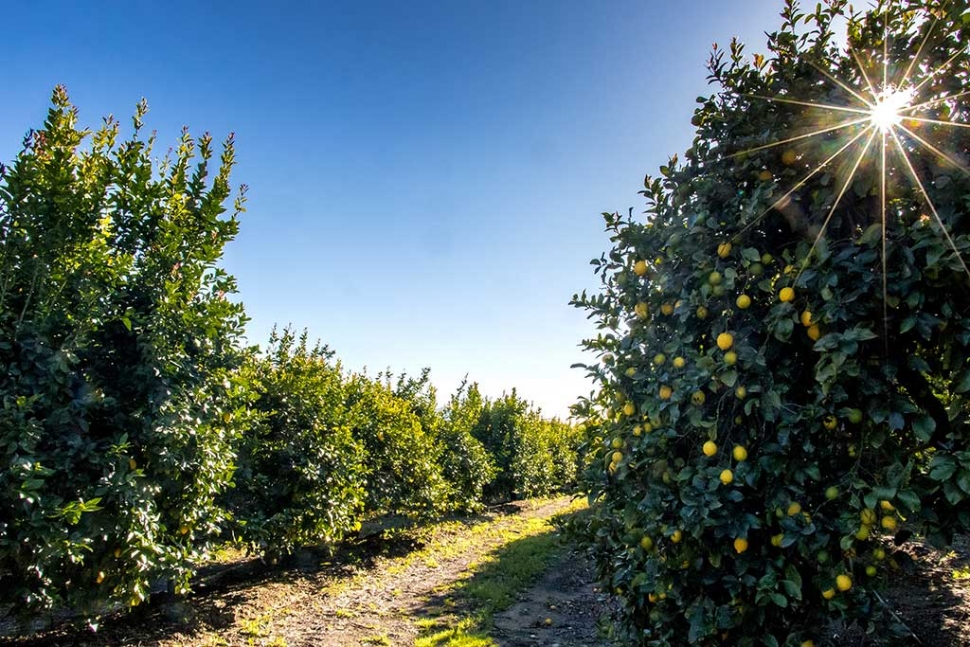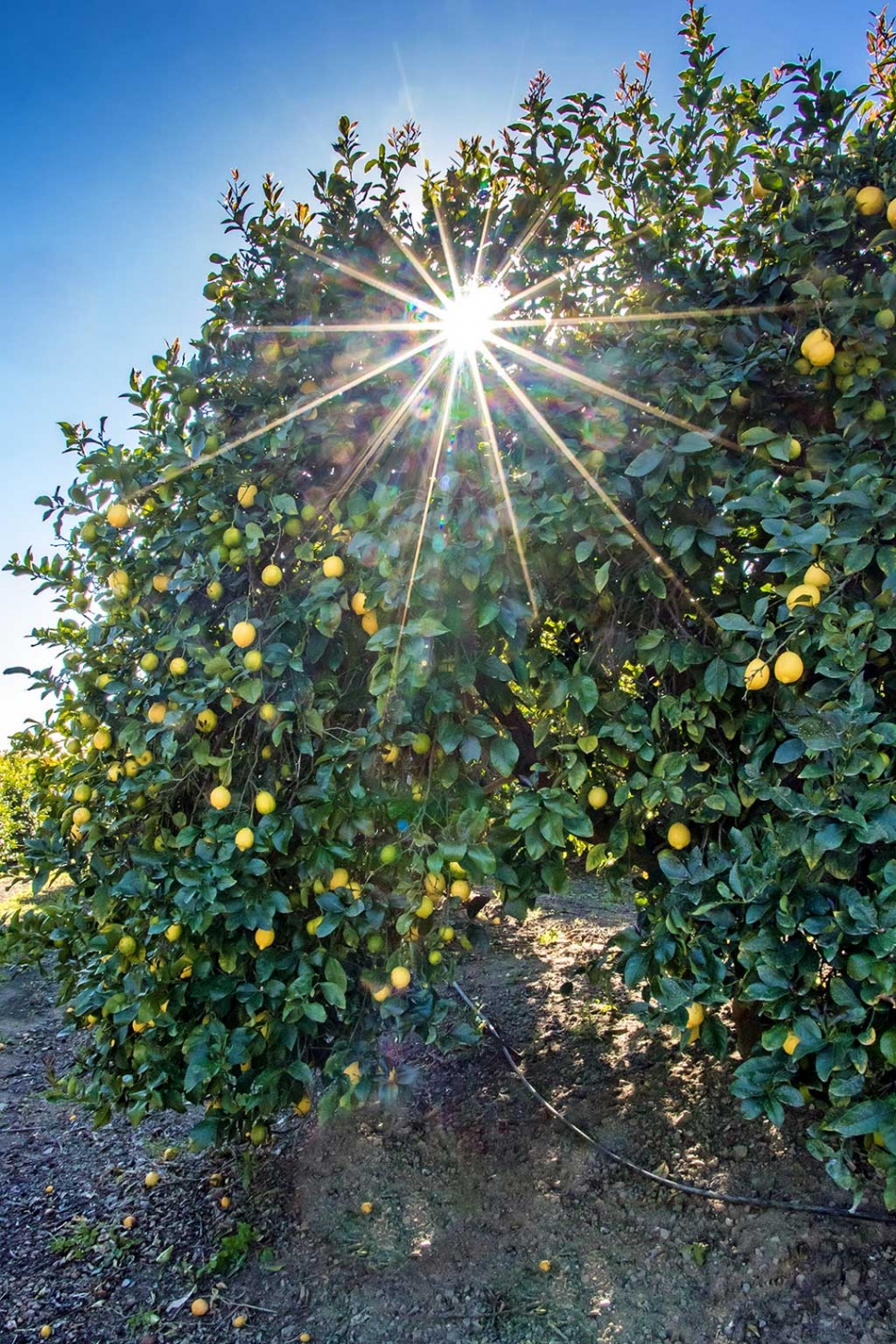|
Photography Know-How
 Photo of the Week: "A Fillmore sun-kissed lemon grove" by Bob Crum. Photo particulars: lens at 18mm, aperture f/22, shutter @1/320sec., ISO 2000. By Bob Crum — Wednesday, March 8th, 2017
A little about lenses...
 Bob Crum  As I go lightly into lenses, a caveat: There is not much here of interest this week if your camera is a point-and-shoot type with a fixed lens. But if I've got you so excited about photography that you're ready to step up to a dSLR interchangeable lens camera, pour some tea and let me entertain you! There are essentially five types: Standard zoom, super telephoto, wide angle, macro and prime. Also various levels of quality within each class. Prime lenses have a fixed focal length. Because they don't have moving parts they generally produce higher quality photos. But primes are not always the best choice. You, or the subject, has to move in order to fill the frame meaning your feet do the zooming. That's not quite doable while shooting a mountain goat from a cliff edge. There are standard zooms and super telephoto zooms. Standard zooms like a 24-70mm are considered walk around lenses. Super zooms range from 55-200 and 150-600mm. I have photos of mermaids on Venus shot with a super zoom. A popular lens category is wide angle. The smaller the number for focal length, the wider, i.e., 15mm is super wide. Any wider is considered a fish-eye lens. Macro lenses discussed another time. I own only five lenses which are: Canon EF-S 15-85mm f/3.5-5.6 IS USM, Canon EF-S 18-135mm f/3.5-5.6 IS STM, Tamron SP 70-300mm F/4-5.6 Di VC USD, Tamron 16-300mm F/3.5-6.3 Di II VC PZD and a Tokina ultra wide AT-X 116 PRO DX, 11-16 F2.8. All have IS except the Tokina. I use my Tokina lens a lot for landscapes. The 18-135 works well for my Sespe Creek mermaid boudoir photography. Good as they are, I don't own a prime lens. Because of the challenges of photojournalism, i.e., nothing is within my control except my camera, I have to have the flexibility of zoom lenses. Lenses are tools and your specific needs (and budget) should dictate the best lens for the job. Canon and Nikon are the lens behemoths but there are many great third party lenses. Tamron, Sigma and Tokina produce quality lenses of great value and often fill a void left by the big two. Budget wise, a general rule is when funds are tight buy the best quality lens you can afford. A quality lens will generally outlast 2 or 3 camera upgrades. However, my lens collection does not include of top-of-the line lenses. Call me frugal if you will, but I'm about value. If a lens is reasonably well built, produces quality images and reasonably affordable, it has a place in my camera bag. When not sure about one lens vs another, rent them first. When I shoot an air show, I rent a Canon 100-400mm f/4.5-5.6L IS II. A great lens that costs $2,200.00. A tad too much to spend for a lens I use only 4-5 times a year. Rent to try then buy it if you like it. Also, research before you buy. There are many reputable websites that test photography gear. After checking a few websites, you'll know whether or not the questionable lens will fulfill your expectations and needs. BTW, all lens have some distortion of some type. Most times not noticeable so don't obsess about it. When you buy a new lens, please don't buy and use a cheap "UV" protective filter. It will not only degrade your photos, they're useless for digital cameras. Secret: I have “clear” glass protective filters on all of my lenses. Email comments, suggestions or questions to: bob@fillmoregazette.com |
